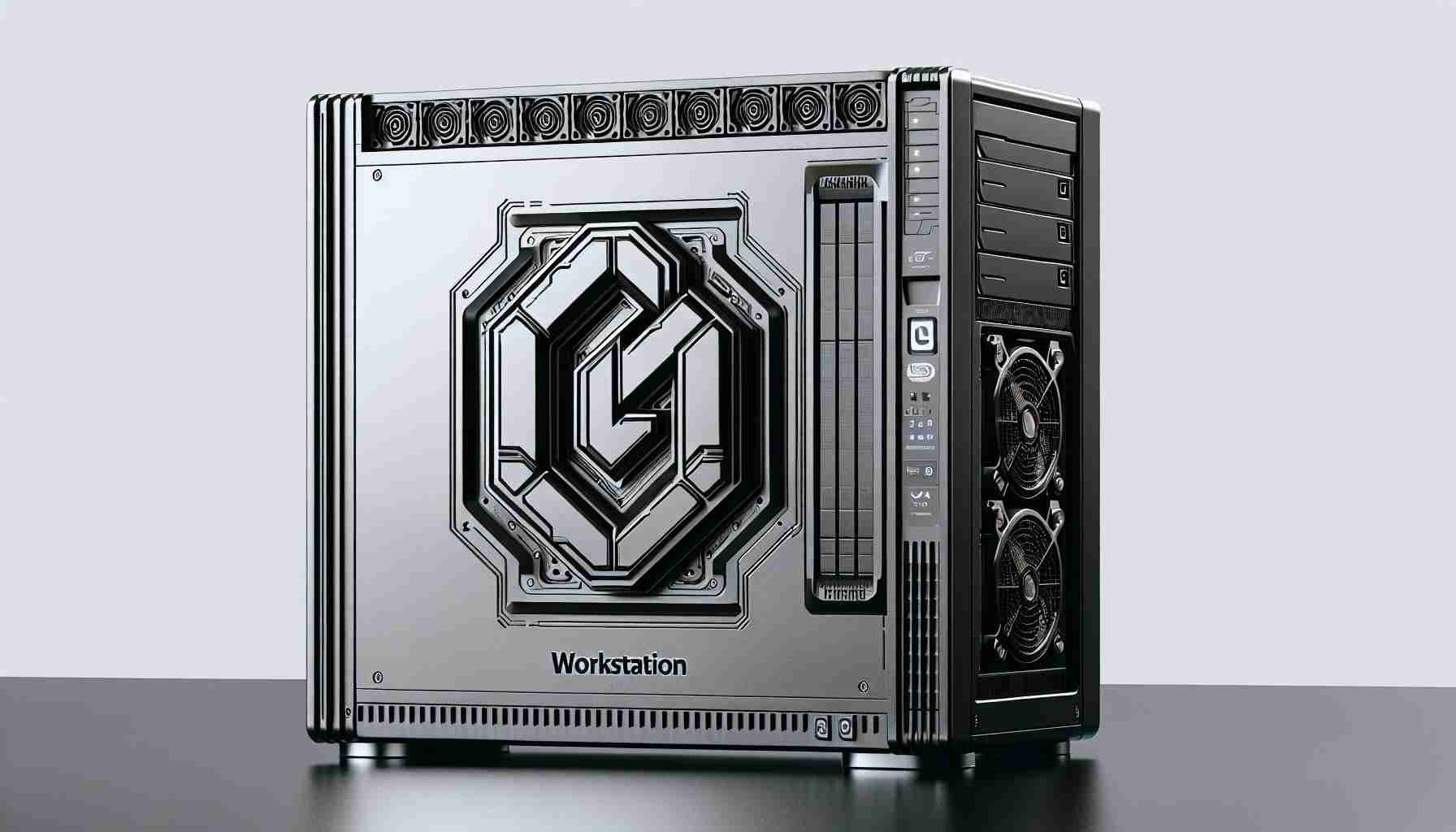Lenovo has unveiled the ThinkStation P8, a new entrant in its workstation lineup, boasting high-end specifications. The workstation integrates a Ryzen Threadripper Pro 7000 WX-Series CPU from AMD, leveraging the cutting-edge Zen4 architecture and the efficiency of TSMC’s 5nm process. Notably, the top-tier model available can be equipped with the 7995WX, featuring a staggering 96-cores and 192-threads, with speeds rising up to 5.1GHz.
For graphics-intensive tasks, the ThinkStation P8 supports an impressive three NVIDIA Quadro RTX A6000 graphics units, using an SLI configuration for parallel processing. Memory capabilities peak at 1TB of DDR5-4800 RAM, organized in an octa-channel setup for optimal data throughput. The system accommodates substantial storage as well, with capability for up to 27.3TB of NVMe Gen4 solid-state drives, ensuring swift access and transfer of huge data sets.
Network performance is no less formidable, with the workstation offering an option for 10 Gigabit Ethernet to swiftly handle large file transfers and maintain efficient workflow. The ThinkStation P8 is designed with industry-specific applications in mind and is fine-tuned by Lenovo to maximize performance with ISV applications.
Aesthetically, the ThinkStation P8 distinctively departs from its lineage with a chassis co-designed with a racing firm. Its subtly bold red accents and purpose-tuned airflow maximization stand out visually while maintaining practical cooling benefits. Furthermore, accessibility is a breeze with the side panel, featuring an innovative hinge for ease of access.
The cost for the ThinkStation P8 starts notably high, reflecting the premium components and design considerations. The entry-level variant is priced at RM16,429.10, while the top configuration comes in at an impressive RM169,439.23 after discounts. This marks the ThinkStation P8 as a formidable, albeit investment-heavy, solution for professionals in fields requiring computing muscle.
The most important questions and key challenges:
- Who is the target market for the Lenovo ThinkStation P8?
The target market for the ThinkStation P8 includes professionals and enterprises in fields such as 3D animation, engineering, scientific research, financial modeling, and anyone who requires significant computational power and data processing capabilities. - What are the key challenges associated with the ThinkStation P8?
Key challenges might include justifying the high cost of investment for small businesses or individual professionals, navigating the complexity of setup and maintenance for those unfamiliar with high-end workstations, and ensuring the provided computing resources are fully utilized to justify the cost. - Are there any controversies associated with the Lenovo ThinkStation P8?
As of the knowledge cutoff date, there are no specific controversies associated with the Lenovo ThinkStation P8. However, the general controversies related to high-performance workstations might include concerns over energy consumption, electronic waste, and the environmental impact of manufacturing and disposing of such advanced technology.
The advantages and disadvantages:
Advantages:
- Outstanding Performance: With a top-tier Ryzen Threadripper Pro CPU and up to three NVIDIA Quadro RTX A6000 graphics units, the workstation is extremely powerful.
- Vast Memory and Storage Options: Supports up to 1TB of DDR5 RAM and 27.3TB of NVMe SSD storage, allowing for efficient handling of large and complex datasets.
- Advanced Networking: The option for 10 Gigabit Ethernet is ideal for quickly moving large files, which is essential for industries dealing with massive amounts of data.
- Specialized Design: The ThinkStation P8’s chassis, co-designed with a racing firm, provides both aesthetic appeal and optimized airflow, which is crucial for maintaining the performance of components under heavy loads.
Disadvantages:
- High Cost: The price is substantial, making it a significant investment that might not be accessible to smaller businesses or individual professionals.
- Energy Consumption: High-performance workstations typically require more energy to operate, contributing to higher electricity costs and environmental impact.
- Specialized Use: The workstation might be overkill for tasks that do not require its full capabilities, potentially leading to underutilization of resources.
If you are looking for more information about Lenovo’s products, you can visit their official website at www.lenovo.com. Please note that specific models like the Lenovo ThinkStation P8 may not yet be listed on their website, as this information is based on a recent announcement, and availability may vary by region and over time.
